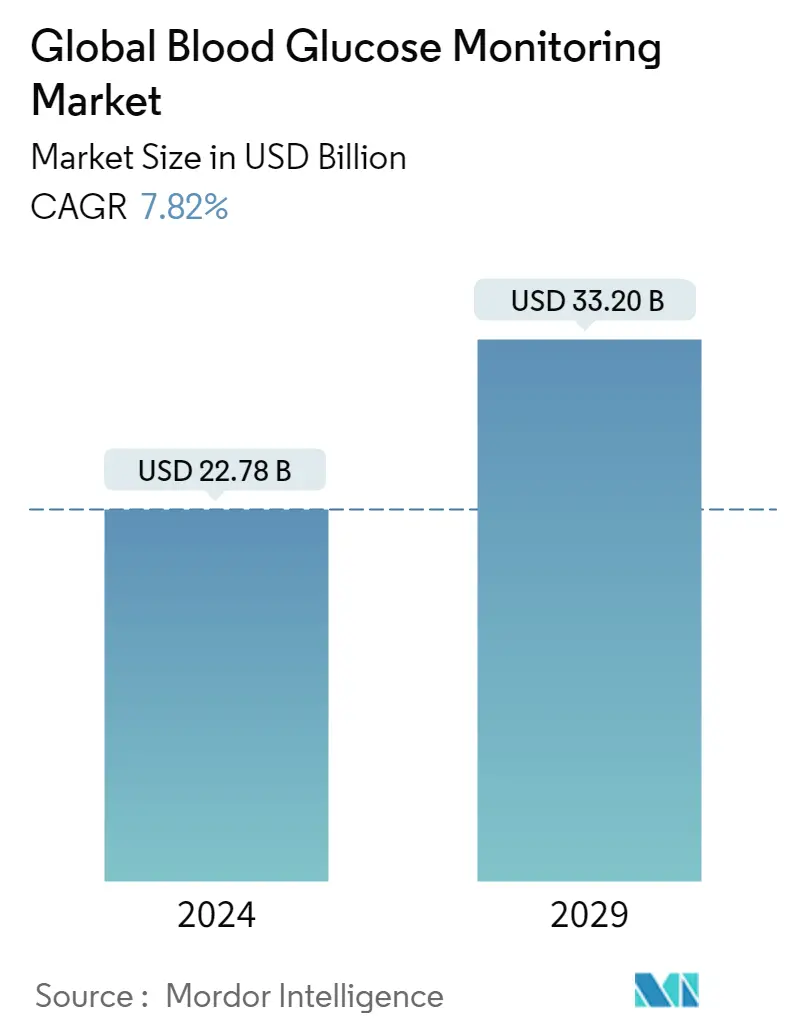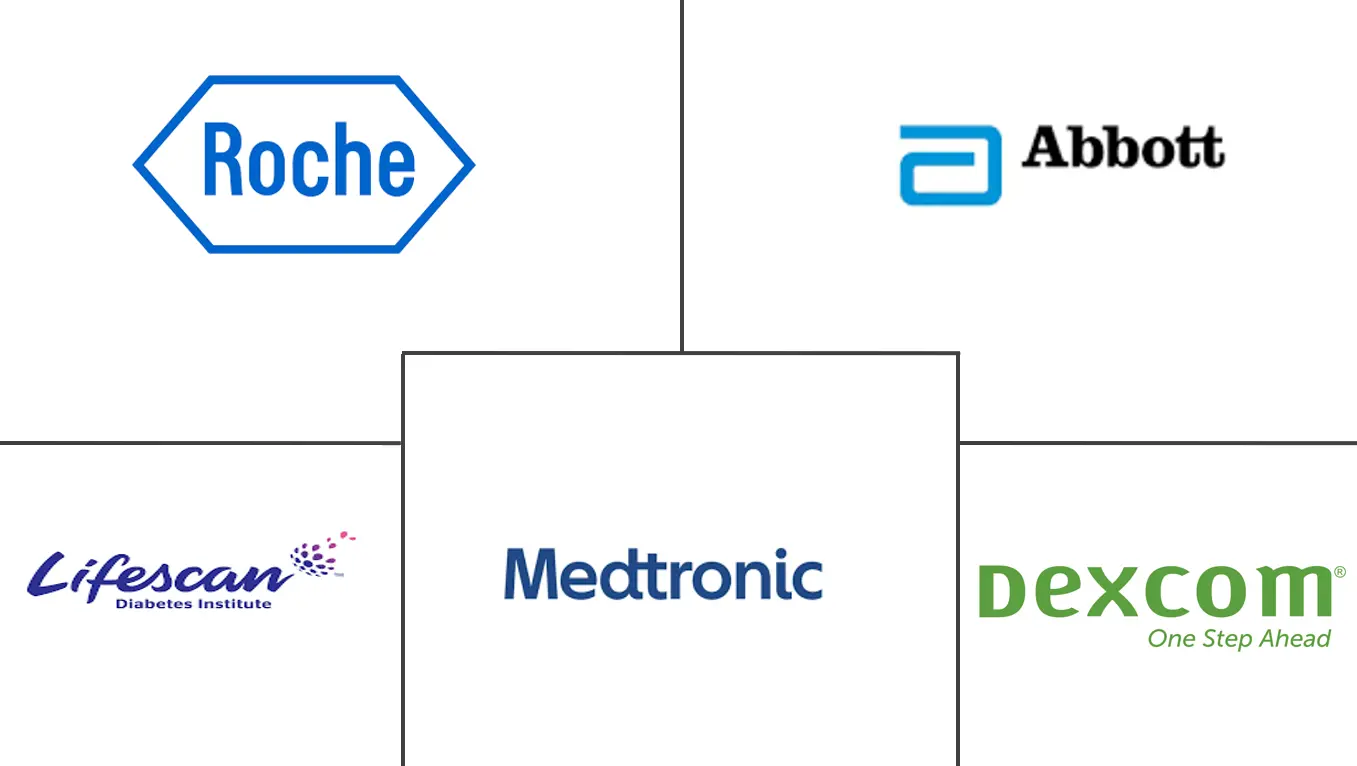Market Size of Global Blood Glucose Monitoring Industry

| Study Period | 2019 - 2029 |
| Market Size (2024) | USD 22.78 Billion |
| Market Size (2029) | USD 33.20 Billion |
| CAGR (2024 - 2029) | 7.82 % |
| Fastest Growing Market | Europe |
| Largest Market | North America |
Major Players
*Disclaimer: Major Players sorted in no particular order |
Need a report that reflects how COVID-19 has impacted this market and its growth?
Blood Glucose Monitoring Market Analysis
The Global Blood Glucose Monitoring Market size is estimated at USD 22.78 billion in 2024, and is expected to reach USD 33.20 billion by 2029, growing at a CAGR of 7.82% during the forecast period (2024-2029).
The COVID-19 pandemic positively impacted the blood glucose monitoring system market growth. Patients with diabetes who were infected with SARS-CoV-2 experienced additional stress and increased secretion of hyperglycemic hormones such as glucocorticoid and catecholamines, which resulted in elevated blood glucose, abnormal glucose variability, and diabetic complications. To avoid aggravation, a patient's blood glucose monitoring had to be considered during the COVID-19 patient's hospitalization, which underlined the importance of blood glucose monitoring devices. The United States Food and Drug Administration also allowed personal blood glucose meters and continuous glucose monitoring devices in hospitals during the pandemic. The pandemic increased remote care from patients and providers and removed many long-standing regulatory barriers.
According to WHO, diabetes is a long-lasting metabolic disorder characterized by high blood glucose (or blood sugar) levels, resulting in severe damage to the heart, blood vessels, eyes, kidneys, and nerves over time. The most prevalent form is Type 2 diabetes, typically occurring in adults, where the body becomes resistant to insulin or fails to produce enough insulin. In the past three decades, the incidence of Type 2 diabetes has significantly increased across countries with varying income levels. Type 1 diabetes, previously referred to as juvenile diabetes or insulin-dependent diabetes, is a chronic condition in which the pancreas produces insufficient or no insulin on its own. For individuals living with diabetes, affordable access to treatment, including insulin, is crucial for their survival. A global target has been established to halt the escalation of diabetes and obesity by 2025.
According to recent estimates published in 2023 by The Lancet, it is projected that over 1·31 billion individuals worldwide could be affected by diabetes by the year 2050. This staggering number represents a significant portion of the global population living with a disease that not only leads to life-altering health complications but also contributes to higher mortality rates and exacerbates various other illnesses. The anticipated increase in diabetes prevalence is primarily driven by the rising incidence of type 2 diabetes. This, in turn, can be attributed to the growing prevalence of obesity and demographic shifts. In the current year, type 2 diabetes accounted for 90% of all diabetes cases. The majority of this burden can be attributed to social risk factors, including high BMI, dietary risks, environmental and occupational hazards, tobacco and alcohol use, and low levels of physical activity. These risk factors thrive due to the obesogenic nature of our environments and the inequitable distribution of resources and societal organization.
Blood glucose monitoring tests the glucose concentration in the blood (glycemia). Particularly important in diabetes management, a blood glucose test is typically performed to determine the fluctuation in blood glucose level to take or alter the medication accordingly, especially for insulin users. Achieving optimum glycemic results can be very difficult without frequent monitoring of blood glucose levels.
Technological advancements in blood glucose meters, including cellular-connected devices that automatically upload SMBG data to secure cloud-based databases, allow for improved sharing and monitoring of SMBG data. Real-time monitoring of SMBG data presents opportunities to provide timely support to patients responding to abnormal SMBG recordings. Such diabetes remote monitoring programs can provide patients with poorly controlled diabetes additional support needed to improve critical outcomes, thereby enhancing the market prospects in the years to come.
